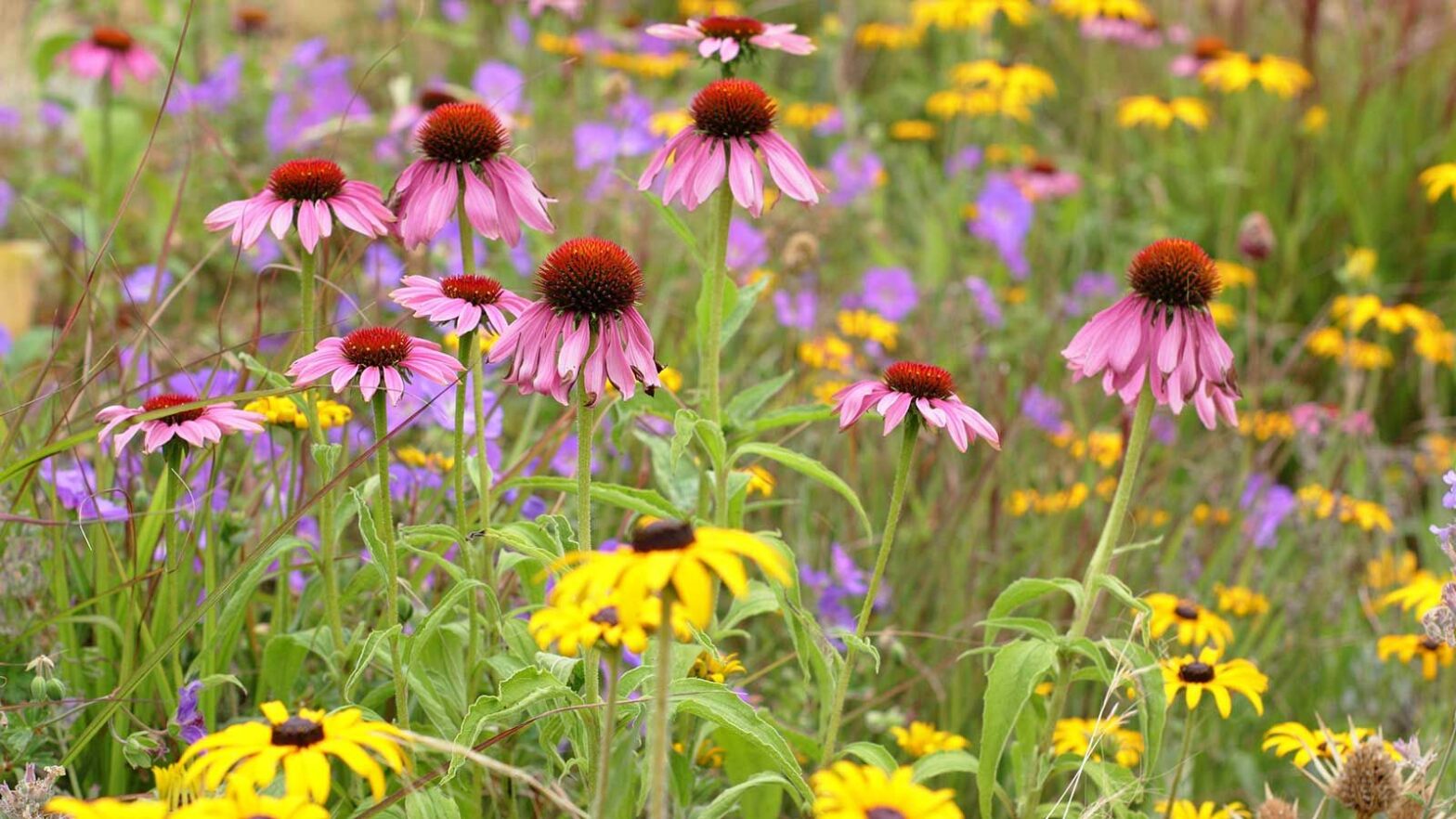Prairie plantings are loved for their relaxed, casual and romantic style and aim to recreate the American prairies of the Midwest. Prairie gardens that utilize native species and minimal human impact are becoming increasingly popular as gardeners increasingly turn to more sustainable methods.
Large-scale prairie planting is most effective when based on the wide open spaces of natural prairies. But it can also be used in a more modern and minimalist way, which is easier to integrate into the home.
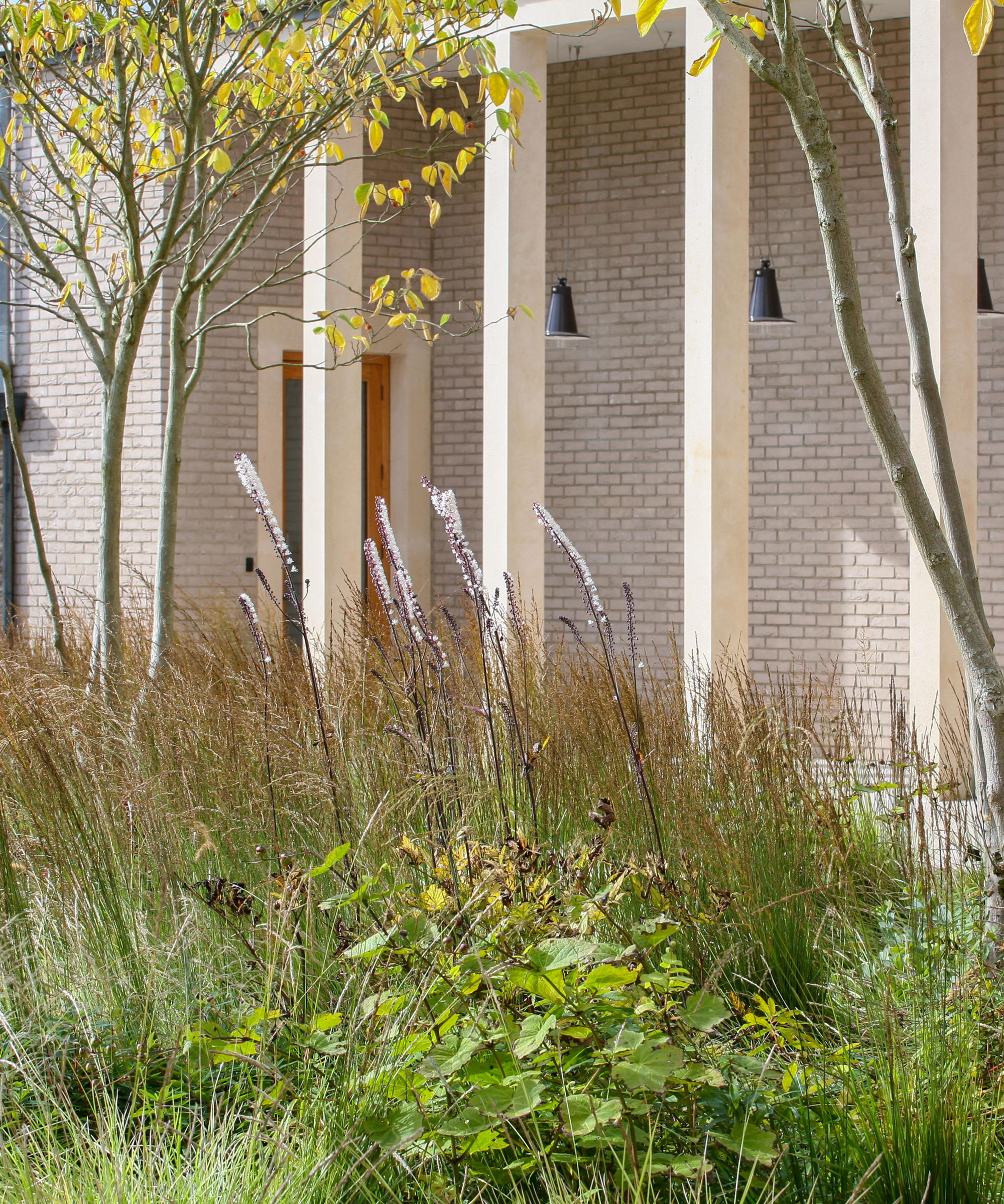
(Photo credit: Delphine Adburgham/Alamy Stock Photo)
What is Prairie Minimalism?
There's no denying that large-scale prairie plantings can look dramatic in the winter months, when grasses and seed heads are highlighted by the low sun and morning frost. But it is late summer and early fall when a prairie garden comes into its own.
Based on a variety of native grasses and late-blooming perennials, the prairie planting creates a stunning tapestry of beautiful color and texture.
On a smaller scale, such as an urban garden border, a diverse selection of grasses and perennials can seem crowded and cluttered. So how can you use native prairie plants and still achieve clean lines and a modern feel?
One answer is to use a limited number of species and a restricted color palette in a simplified pattern.
A sustainable approach
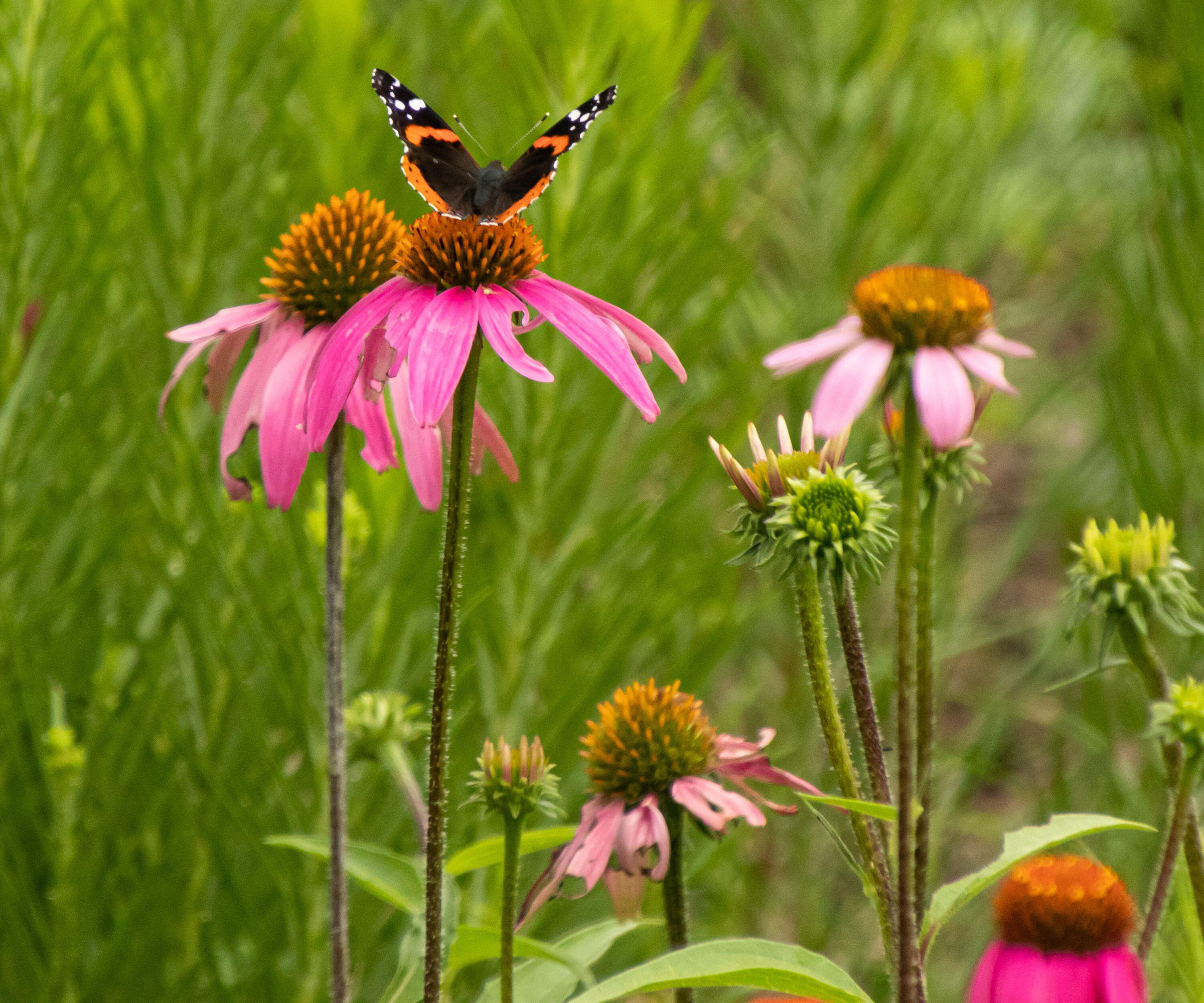
(Photo credit: Julie Huser/Alamy Stock Photo)
Prairie planting and prairie minimalism not only look visually attractive, but can also provide lasting benefits to the world around us. From an ecological perspective, prairie minimalism uses native plant species that, once established, are drought-tolerant and require significantly less irrigation than a traditional lawn or bed.
Prairie planting consists of plants with root systems of varying depths and can help prevent soil erosion because the deep roots in particular help stabilize the soil.
In addition, the use of native plants adapted to local conditions significantly reduces the need for fertilizers and other chemicals.
When it comes to the ecological benefits of prairie planting, the variety of plants used can help attract wildlife like birds, pollinators and other beneficial insects to your garden.
The perennial flowers or perennials provide an important source of nectar for bees and butterflies, and in winter the seed heads help feed birds and the plant stems provide shelter for insects.
An added benefit for time-poor gardeners is that this type of planting requires significantly less maintenance. By saving time on watering, feeding, weeding and pruning, there is more time to enjoy the garden and benefit from it therapeutically.
How to achieve a prairie minimalism style in your garden
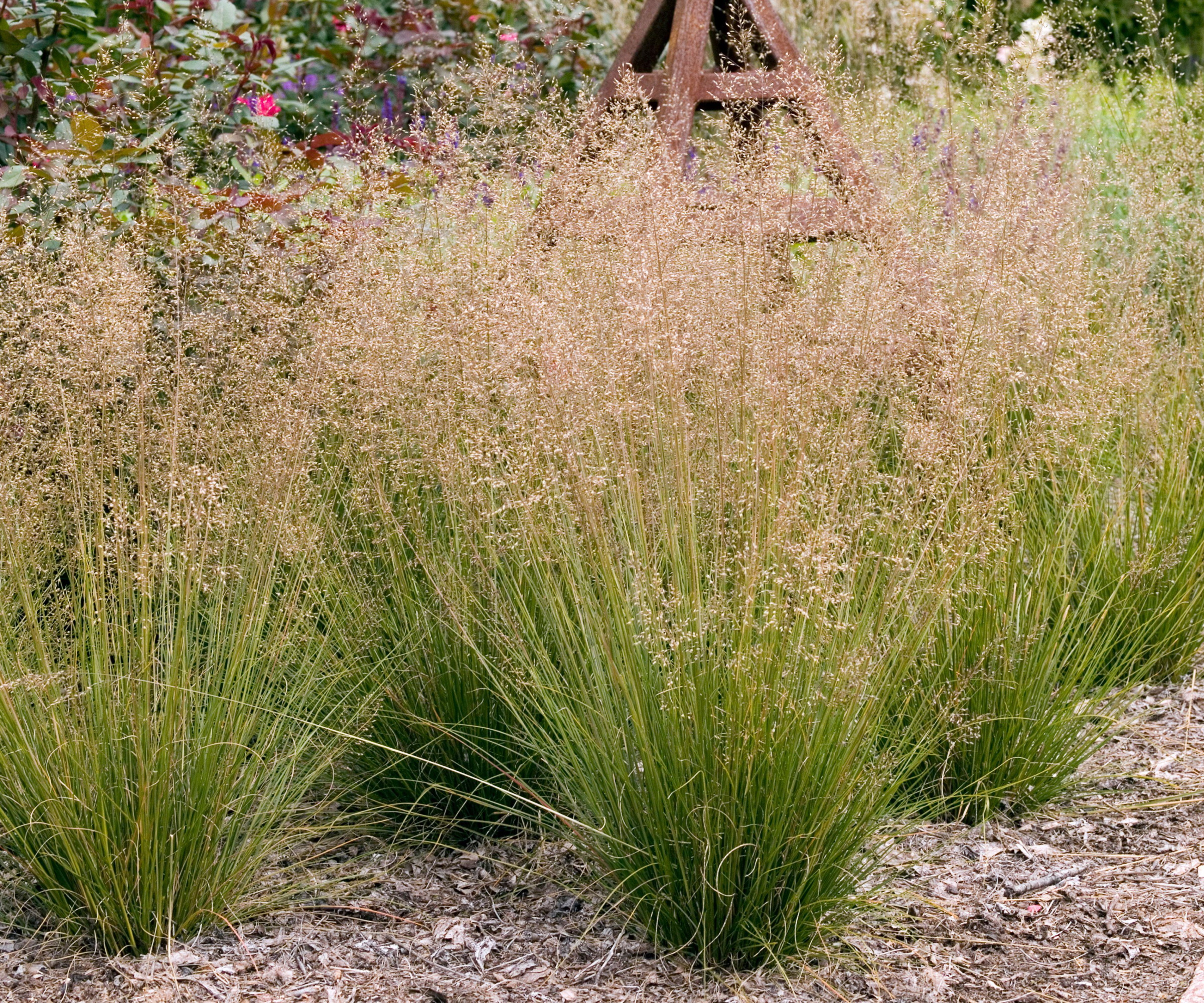
(Image credit: Alamy/Botanic World)
In contrast to the variety of plant species found in a natural prairie, restraint is the key to a more modern and minimalist style.
When asked how modern, minimalist prairie planting differs from traditional prairie-style planting, author and natural landscaping specialist Benjamin Vogt replied, “Much less biodiversity.” In a wild meadow or prairie, there are dozens and dozens of species in one square meter. Minimalism, by definition, attempts to reduce echo to its most symbolic core. It could be one type of grass or just a few.”
For a modern, minimalist design, gardeners often look for more structure and clear lines. To achieve this, Benjamin suggests “limiting the grass to one uniform species (probably a groundcover or matrix species, which is shorter) and then allowing only 1-3 perennial species to bloom at a time.”
“These perennial species can also be very architectural in structure or have a hilly, topiary shape, such as: Baptism of minors And Smyphyotrichum oblongifolium.'
Commonly known as dwarf false indigo. Baptisia australis our. irrelevant is a herbaceous perennial native to the prairies of North America and has an upright habit. Offers a long, interesting season, Baptism of minors produces white flower buds that develop into purple-indigo flowers loved by pollinators.
In addition, if not dead, black seed pods will appear and remain throughout the winter, increasing their attractiveness. Suitable for growing in zones 3 to 8. You can purchase Hazzards Baptisia Australis Minor seeds on Amazon.
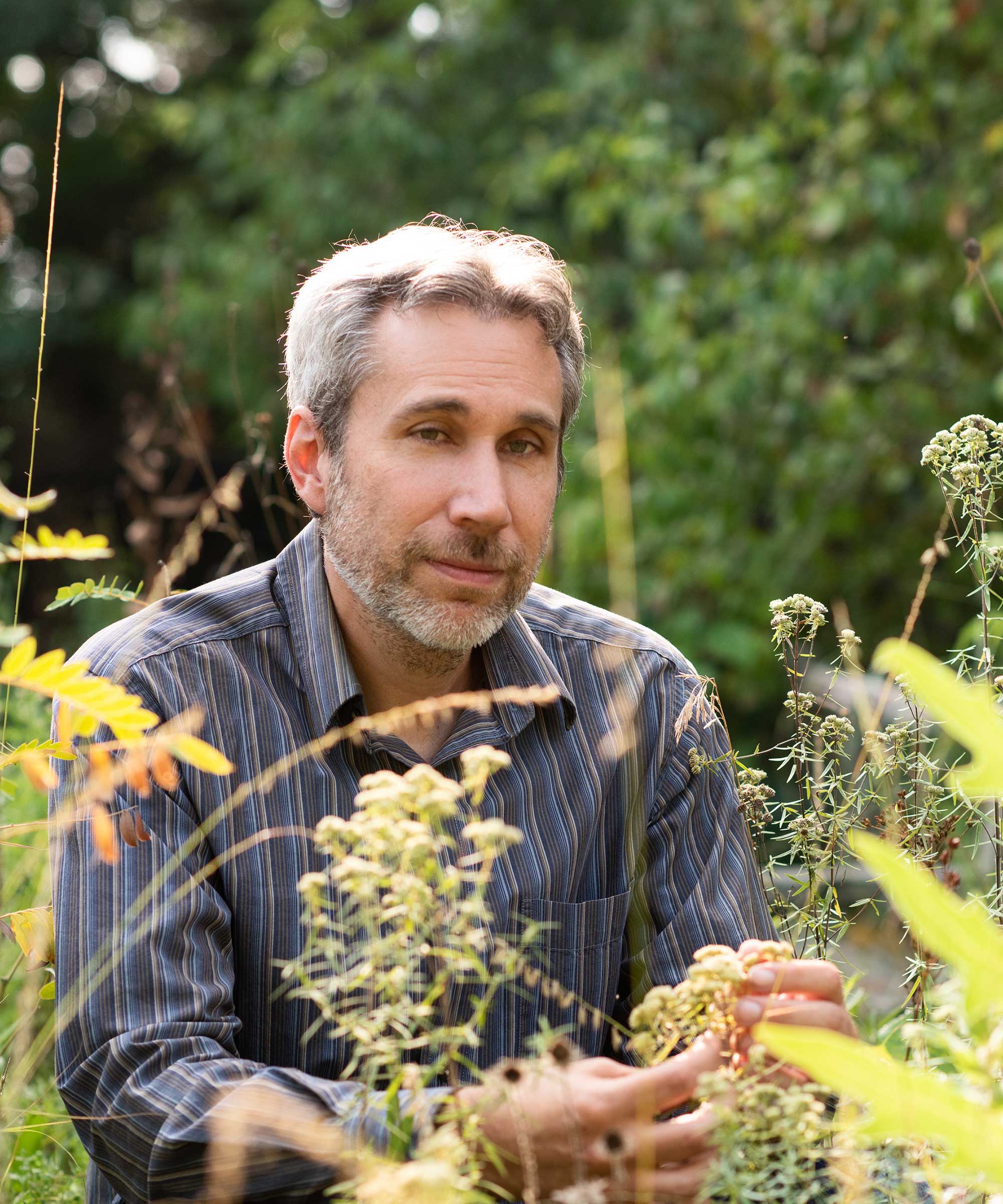
Plants for the prairie minimalism look
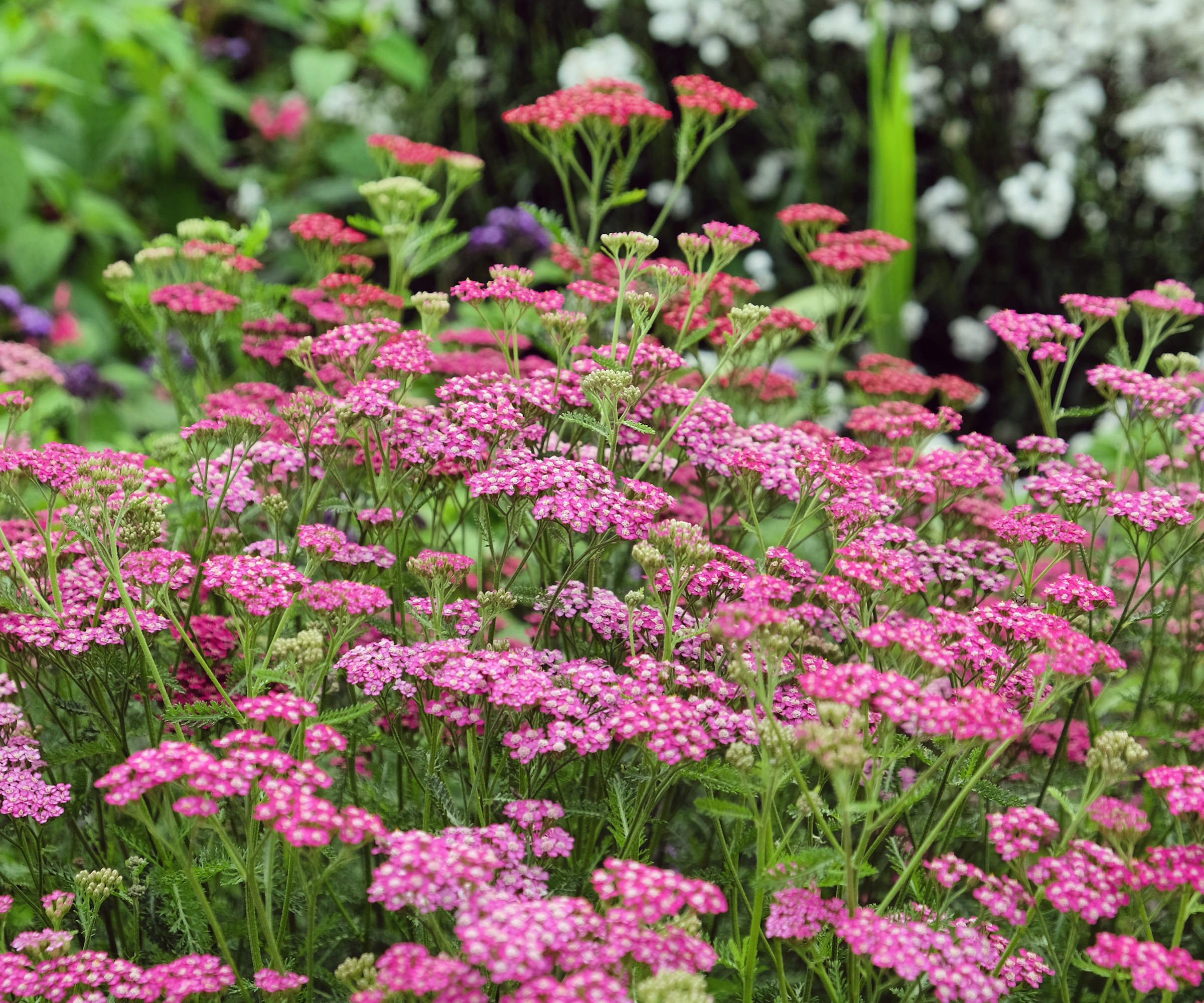
(Image credit: Getty Images/Alex Manders)
Prairie planting consists of a mixture of grasses and flowering perennials, although the proportion of these plants can vary depending on the desired effect.
For example, a natural prairie may be about 75% grasses and 25% flowers, but a specially designed small modern prairie garden may lean toward more colors and animal attractions and a ratio closer to half.
Native perennials commonly used in modern prairie plantings include the long-lived and heat-resistant black-eyed Susan (Rudbeckia). The petals are golden yellow and surround a dark brown center. Rudbeckia hirta ''“Indian Summer” blooms from July through fall and tolerates zones 5 and above. You can buy Indian Summer Black – Eyed Susan at Nature Hills.
Another native perennial often used in prairie designs is purple coneflower (Echinacea purpurea). This plant produces purple petals that hang from its brown cone. It attracts butterflies and hummingbirds and is easy to care for. Suitable for growing in zones 3 to 8. You can purchase NatureZ Edge Purple Coneflower seeds on Amazon.
The drought-tolerant yarrow (Achillea millefolium) is another native option. Because it is pollination friendly, it is known to be a magnet for all types of bees, butterflies and hoverflies and does well in zone 4 and above. Outsidepride Achillea Millefolium Wild White Yarrow Seeds are available on Amazon.
For grasses, bluestem (Schizachyrium scoparium), switchgrass (Turned into panic) and dropseed (Sporobolus) are favorable due to their colors, textures and ability to create a dense matrix and movement.
Commonly used for prairie and native plantings, Little Bluestem is a hardy perennial grass with blue-silver leaves that takes on an autumnal brown hue and produces white, fluffy seed heads in the fall.
With a final height of 2 to 3 feet, it remains compact and can handle Zone 3 and above. You can buy Little Bluestem Grass from Nature Hills.
For smaller spaces and a more structured feel with clean lines, Neil Diboll, author and president of Prairie Nursery in Westfield, Wisconsin, recommends “using short grasses, especially Prairie Dropseed.” (Sporobolus heterolepis) and Little Bluestem (Schizachyrium scoparium) in monocultures, mixed with wildflowers in between.'
Neil continues, “A particularly effective approach is to use Prairie Dropseed as a transitional border between a formal lawn and the “wilder” prairie garden.” These grasses can also be planted side by side in winding “rivers” of monocultures, punctuated by larger individual plants (Baptisms, Silphiaetc.) and groups of 5-7 or more showy flowers, depending on the species.'
For compact planting spaces, he also suggests “focusing on specific combinations of plant foliage and flower colors to create maximum interest in a small space.” When it comes to planting on a border, Neil recommends that “tall plants can play a role in small spaces, particularly in 'native border gardens' along walls, and that tall plants can be used in a backyard corner to make an exclamation point with a few individual plants such as eupatorias, silphias and vernonias.”
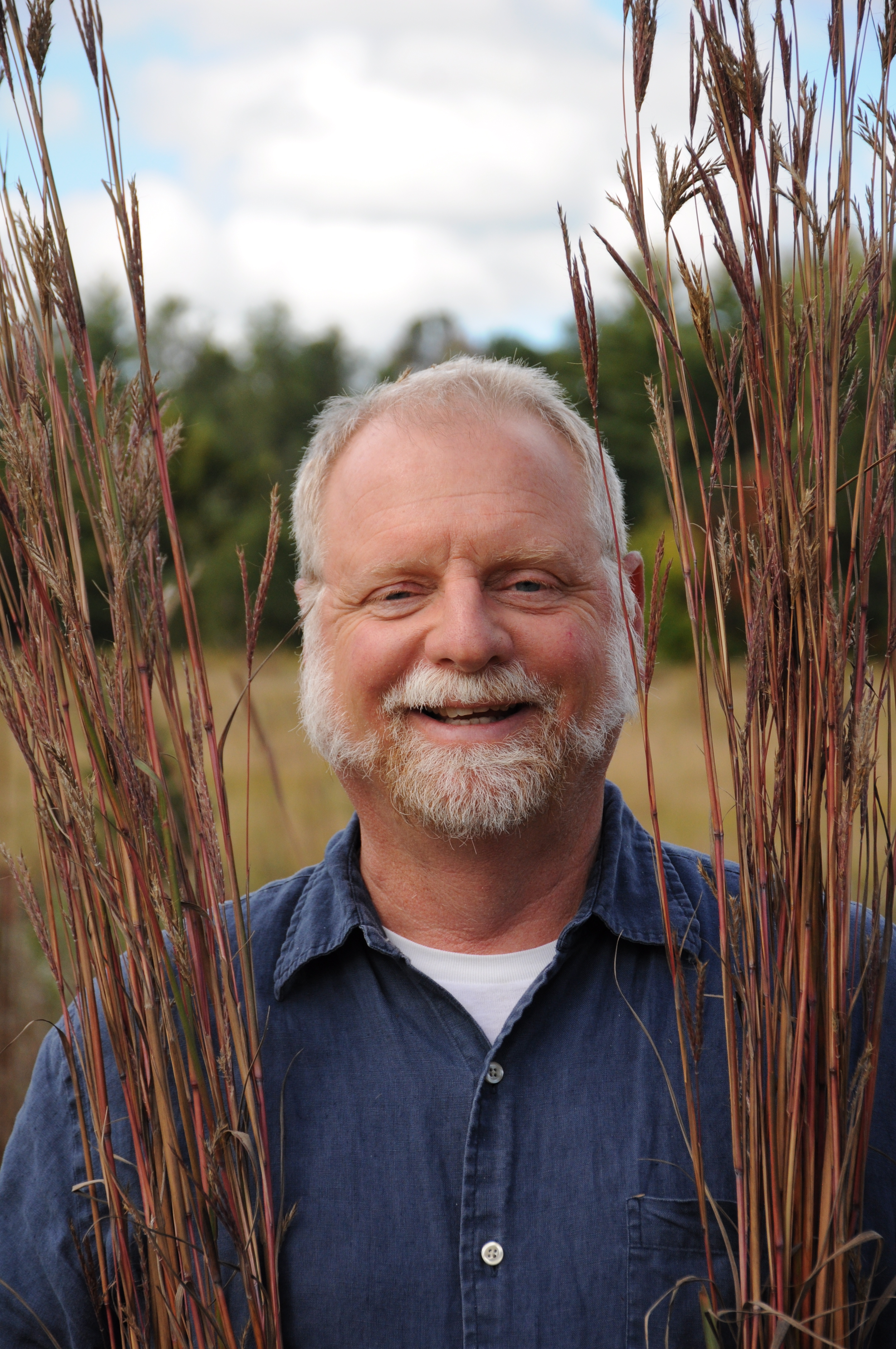
With climate change and rising global temperatures, gardeners are looking for more ways to make their gardens more sustainable. One option is to reduce your lawn or create a meadow landscape instead.
Simply defined as growing a variety of native wildflowers and grasses, after the initial investment you can look forward to less watering and mowing and instead enjoy viewing all kinds of wildlife.
